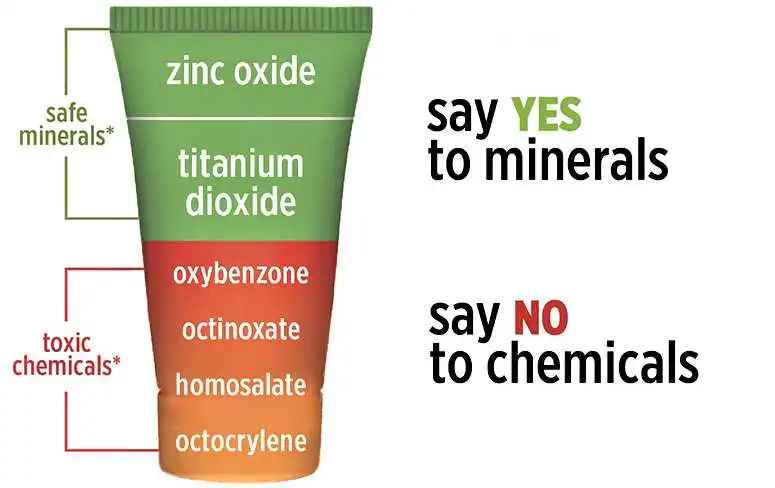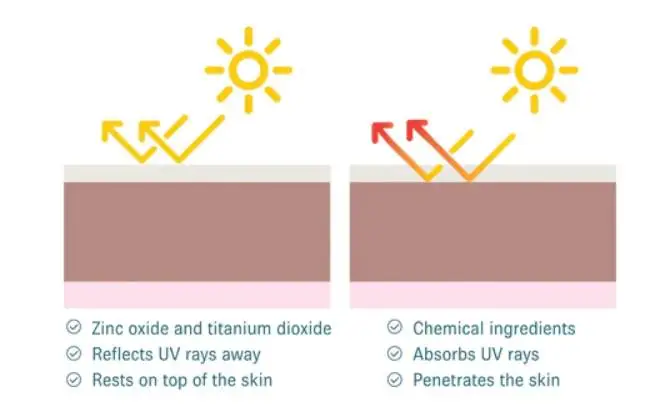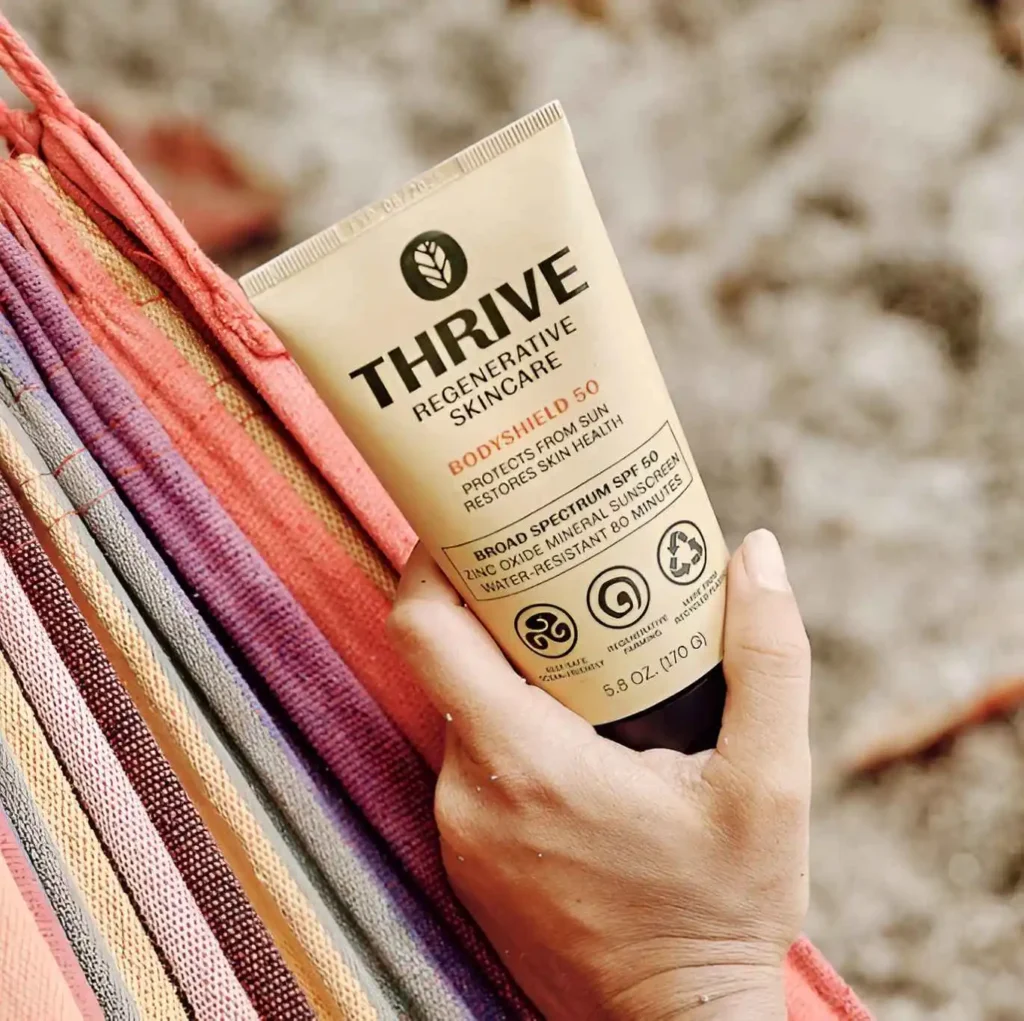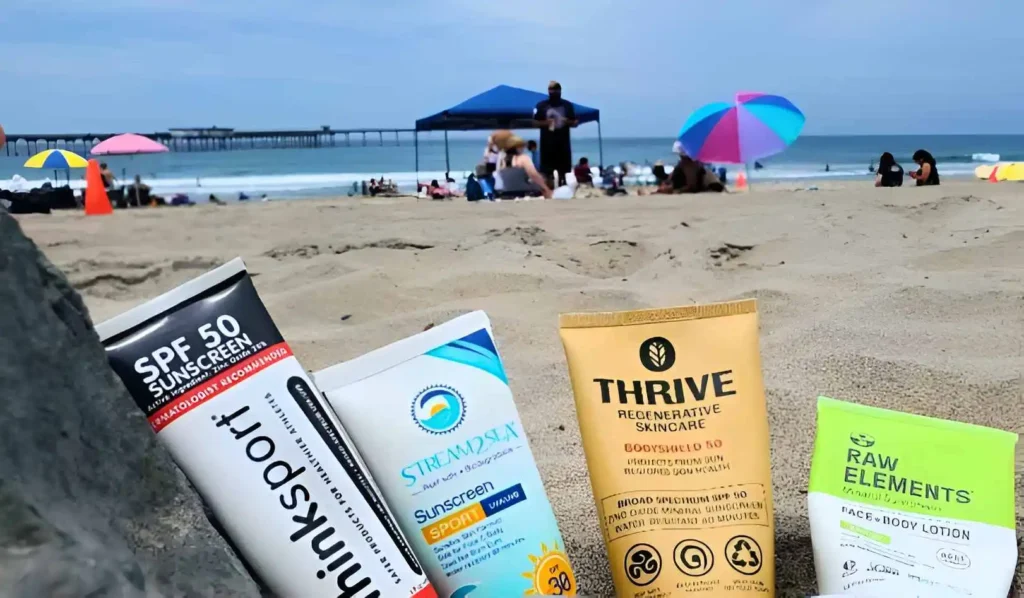Mineral Sunscreen Guide: Reef Safe & Chemical-Free Sunblock
Discover the best mineral, reef safe, and biodegradable sunscreens for 2025. Safe for skin, ocean-friendly, and Hawaii-approved sunscreens!

If you’ve ever flipped over a sunscreen bottle to check out its ingredients and thought, “What even all these are?”, you’re not alone. From hard-to-pronounce ingredients to confusing SPF numbers, sunscreen shopping can feel like a science project gone rogue.
So if you’re searching for a sunscreen that protects your skin and the planet too, I’m here to help you sail through the ocean of mineral sunscreen, reef safe sunscreen, and everything in between.
Whether you’re planning a beach vacay in Hawaii or just want to swap harsh chemicals for a cleaner alternative, this sunscreen guide has got you covered!

What Is Mineral Sunscreen and Why It Matters
Before delving any deeper, let’s find out what a mineral sunscreen really is and how it is better than your normal sunscreen.
Mineral vs Chemical Sunscreen
Mineral sunscreen isn’t just a fancy label. Where conventional sunscreens often contain synthetic chemicals like oxybenzone and octinoxate, mineral sunscreen uses ingredients that are derived from natural sources; think plant-based oils, minerals like zinc oxide, and botanicals.
Typically a mineral sunscreen cream sits on your skin and reflects UV rays, rather than entering your bloodstream. It’s like a little mineral shield that says, “Not today, sunburn!”

Benefits of Using Mineral Sunscreen Cream
- Gentle on sensitive skin
- Free from harsh, hormone-disrupting chemicals
- Often packed with nourishing antioxidants
- Eco-friendly and safer for marine life
Is Mineral Sunscreen the Same as Natural or Biodegradable Sunscreen?
All mineral sunscreens are natural but biodegradable? Not always. However, these sunscreen types do overlap. Biodegradable sunscreen breaks down naturally without harming the environment, and many mineral sunscreens fall into this category. So be sure to check the label before buying; it’s like dating, don’t just go by appearances!

What Is Reef Safe Sunscreen?
Do you know what sunscreens can do to our nature, oceans specifically? Let’s find out.
Understanding the Impact of Sunscreen on Coral Reefs
As per Science Daily, up to 14,000 tons of sunscreen enters our oceans each year. Sunscreen ingredients, especially oxybenzone and octinoxate, can bleach coral reefs, disrupt marine life, and contribute to reef degradation. That is why reef safe sunscreen is not just a trend, it’s a must if you care for the environment. Such sun protection creams skip the harmful stuff in favor of ingredients that keep reefs happy.

Ingredients to Avoid in Non-Reef-Safe Sunscreens
If you see these on your sunscreen label, stop using it immediately:
- Oxybenzone
- Octinoxate
- Octocrylene
- Homosalate
- Parabens
- Triclosan
Buy a sunscreen with zinc oxide or titanium dioxide (non-nano, ideally). It is safer for reefs and for you as well.
Why Zinc Oxide and Titanium Dioxide Matter in Sunscreens
Mineral ingredients in sunscreen, like zinc oxide and titanium dioxide, sit on top of your skin and reflect UV rays. They’re the gold standard in non chemical sunscreen options, offering broad-spectrum protection without the reef-killing side effects.

Hawaii Sunscreen Ban: What It Is and How It Impacts Tourists?
Have you heard about the Hawaii sunscreen ban? Here is everything you must know if planning to spend some of your 2025 summers on the island.
Sunscreen Ingredients Banned in Hawaii
Hawaii was one of the first places to stand up for marine life. It passed a law banning the sale of sunscreens containing oxybenzone and octinoxate in 2018. These two are the worst offenders when it comes to reef damage.

As of January 2021, Hawaii sunscreen regulations got even stricter, banning more products that aren’t reef safe. So if you’re heading to the islands, you’ll need a Hawaii sunscreen that complies with the law.
How the Hawaii Sunscreen Ban Impacts Travelers

Heading to Hawaii? You’ll need to pack a Hawaii-approved sunscreen because if you’re caught using non-compliant sunscreen in Hawaii, it could result in fines; or at least a firm scolding from a lifeguard. More importantly, it’s a chance to protect the very waters you came to enjoy. So carrying a reef safe sunscreen is the only option. Don’t worry, I’ve got you covered with some recommendations below.
Best Hawaii-Approved Sunscreens for Your Next Trip
Look for:
- Reef safe sunscreen labels or chemical free sunblock
- Biodegradable sunscreen certifications
- Brands using zinc oxide and titanium dioxide only
More on the top brands in just a sec.
Best Reef Safe Sunscreen Brands to Try in 2025
Check out some of the amazing reef safe sunblock brands that are gentle on your skin as well:
Top Biodegradable Sunscreens
Here are a few expert-approved, environmentally friendly options that won’t leave you greasy or ghost-faced:
- Badger SPF 30 Active Mineral Sunscreen Cream: USDA-certified sunscreen cream with nourishing ingredients.
- Stream2Sea SPF 30: Biodegradable and tested safe for freshwater and marine life.
- Thinksport SPF 50+: Broad-spectrum, mineral-based, and water-resistant.
- Raw Elements SPF 30: Comes in a recyclable tin. Hello, zero waste!
Mineral Sunscreens with Zinc Oxide That Are Gentle on Skin and Reefs
Look for 20% non-nano zinc oxide for effective, ocean-friendly coverage. They are safe for even the most sensitive skin.
- Babo Botanicals Clear Zinc Sunscreen
- Blue Lizard Sensitive Mineral Sunscreen
- All Good Sport Sunscreen Lotion
- Thrive Bodyshield SPF 50

Chemical-Free Sunblocks Recommended by Dermatologists
Derms love these because they’re gentle yet effective:
- Juice Beauty SPF 30 Oil-Free Moisturizer
- COOLA Mineral Face Matte Tint
- ATTITUDE Mineral Sunscreen SPF 30
These are all chemical free sunblock options, often recommended by skin professionals for daily use. If you want to avoid white cast, go for ATTITUDE’s cream.
How to Choose the Best Non-Chemical Sunscreen
If you have an eye on any other sunscreen brand, here is how to determine whether it fits under natural and reef safe category:
What to Look for on the Label (Ingredients & Certifications)
Scan for these green flags:
- “Reef safe” or “Hawaii-compliant”
- “Broad-spectrum” (protects against UVA & UVB)
- Zinc oxide or titanium dioxide (non-nano)
- Certifications like “EWG Verified” or “Cruelty-Free”

SPF, Water Resistance, and Skin Type Considerations
- SPF 30 is a great starting point for daily use, but if you’re prone to burning, go higher.
- Water resistance is also important, especially if you’re planning to swim or perform cardio leading to sweat.
- Match your sunscreen to your skin type: lightweight for oily skin, creamy or extra hydrating for dry skin, oil-free for acne-prone skin, and baby formulas for sensitive types.
Spray vs. Cream: Which Mineral Sunscreen Works Best?
Creams tend to be more reliable and ocean-friendly. Sprays are convenient but often less effective and risk inhalation. A good mineral sunscreen cream ensures better coverage and longer-lasting protection. Plus, with cream, you’re less likely to waste product; or blast your neighbor at the beach!
DIY & Eco-Friendly Sunscreen Tips
If you’ve ever thought of preparing your own natural sunscreen, you’re not alone. Let’s see if it’s possible or not.

Can You Make Your Own Natural Sunscreen at Home?
Technically, yes you can make your sunscreen at home but it’s tricky, so proceed with caution. You’ll find plenty of DIY recipes with coconut oil, beeswax, and zinc oxide. However, SPF can’t be accurately measured in DIY sunscreen recipes. So I suggest sticking to trusted brands to ensure proper SPF coverage.
How to Store and Use Natural Sunscreen Properly
Take these precautions when using a DIY or store-bought non chemical sunscreen:
- Keep it out of direct sunlight to prevent ingredient breakdown
- Check expiration dates of store-bought sunscreens and keep an eye on DIY creams as natural products can spoil faster
- Apply generously and reapply every 2 hours.especially after swimming or sweating
Sustainable Packaging and Zero-Waste Options
Many brands now offer biodegradable sunscreen in metal tins, cardboard tubes, or refillable glass jars. Brands like Raw Elements and All Good are leading the charge with recyclable or compostable containers. Every small switch makes a difference.

FAQs About Mineral and Reef Safe Sunscreens
If you have some doubts about natural and reef safe sunscreens, these might clear them:
Is Mineral Sunscreen Safe for Kids and Babies?
Absolutely! In fact, most chemical-free sunblock is ideal for little ones, especially those with sensitive skin. Just double-check that it’s fragrance-free and contains non-nano zinc oxide. At the same time, I also recommend avoiding using even natural sunscreen on babies below 6 months of age.
Does Reef Safe Mean Biodegradable?
Not all reef safe sunscreens are biodegradable, but the best sunscreens check both boxes. Look for products labeled as both reef safe and biodegradable to cover your bases.
Can I Use Natural or Mineral Sunscreen Every Day?
Yes, and you must do it! Daily SPF is your best friend against skin damage and aging. A chemical-free sunblock is a skin-friendly way to protect against UV damage year-round. I’d suggest buying a nutrient-rich sunscreen cream with the most natural ingredients when planning to use it daily.

Final Thoughts: Protect Your Skin and the Planet
Choosing the right sunscreen isn’t just about avoiding a sunburn. With the right mineral sunscreen, you’re saying no to harmful chemicals, yes to ocean-friendly formulas, and a big heck-yeah to glowing, protected skin. Whether you’re heading to the beach, hiking a sunny trail, or just running errands, reach for a reef safe sunscreen and keep it clean, both for your skin and the sea.
So lather up, save the reefs, and keep glowing. The sun’s out, but now you’ve got all the protection you need. Shine and enjoy this summer safely, sunshine 🌞
Pingback: 5 Fuzzy Shoulder Bags for Women with Pro Styling Tips – Shefawn